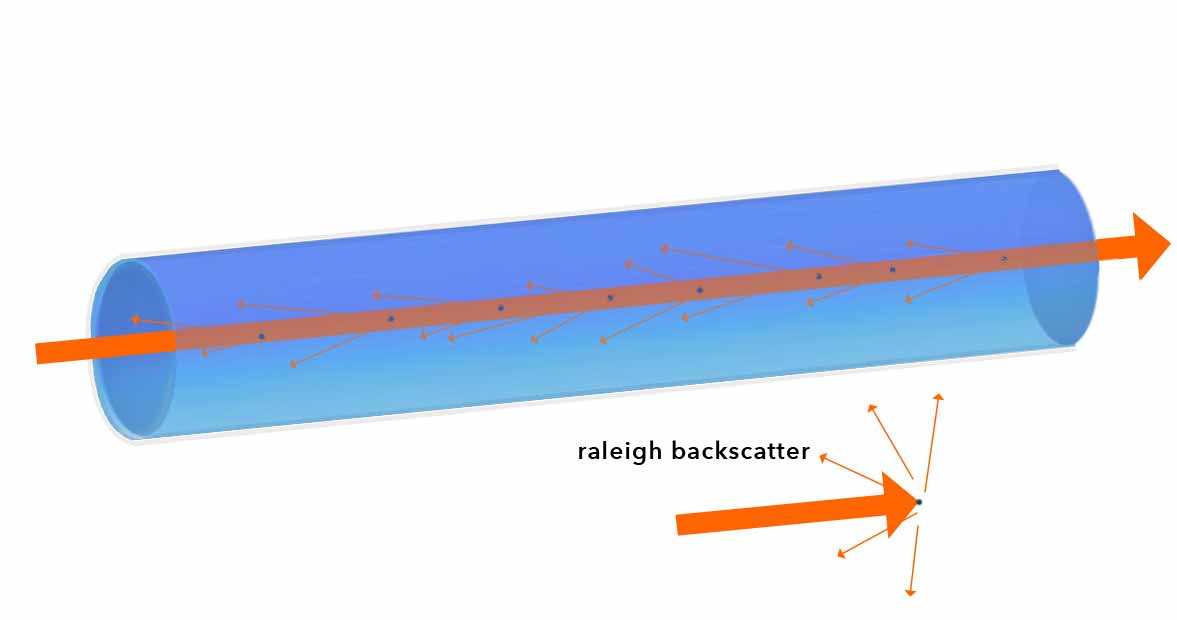Rayleigh scattering
Where electromagnetic waves encounter small particles with very small diameters compared to the wavelength of the wave, elastic scattering effects occur, known as Rayleigh scattering. In elastic scattering, the kinetic energy of the particles is conserved within the system in which the scattering occurs. Therefore, the scattered photons have the same energy as the incident photons. Rayleigh scattering occurs, for example, when light strikes the molecules of transparent solids, liquids, or gases, such as in the Earth's atmosphere or even in optical fibers. The scattering has its origin in the polarizability of the particles of the medium through which the electromagnetic wave passes. Rayleigh scattering has no effect on the state of the medium itself. The strength of the scattering depends on the frequency, whereby electromagnetic waves with shorter wavelengths are scattered more strongly. The kinetic energy of the random particles of the system in which the scattering takes place remains the same in Rayleigh scattering, consequently the frequency of the incident light coincides with that of the scattered light.
In the above example of scattering in the Earth's atmosphere by molecular oxygen and nitrogen, a second scattering effect occurs, the Raman scattering. However, this is an inelastic scattering part, which causes a minimal shift of the wavenumber of the photon.

Raleigh scattering: Impurities (black) in optical waveguides lead to backscattering attenuation as the light is scattered by these molecules. The dimensions of the scattering sources are significantly below the wavelength of the light. ( © cronologic GmbH & co.KG )
